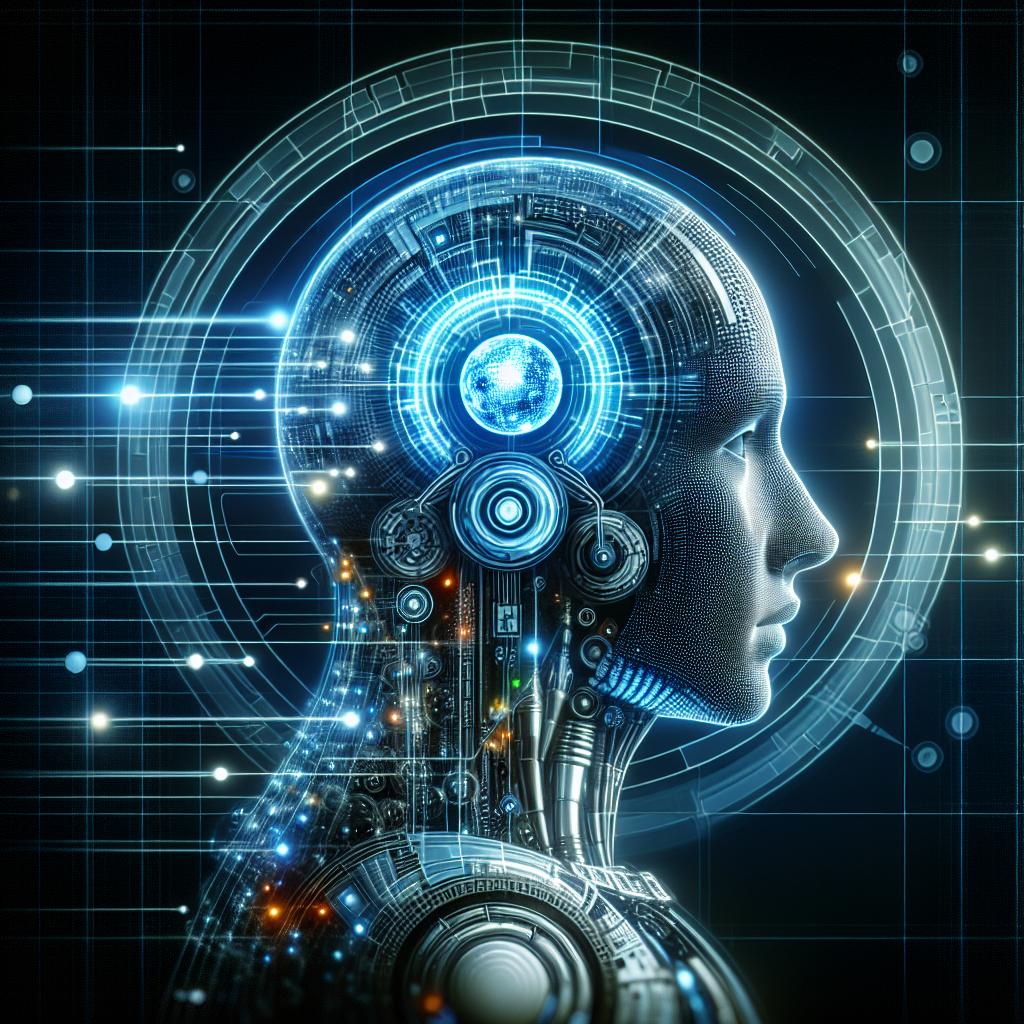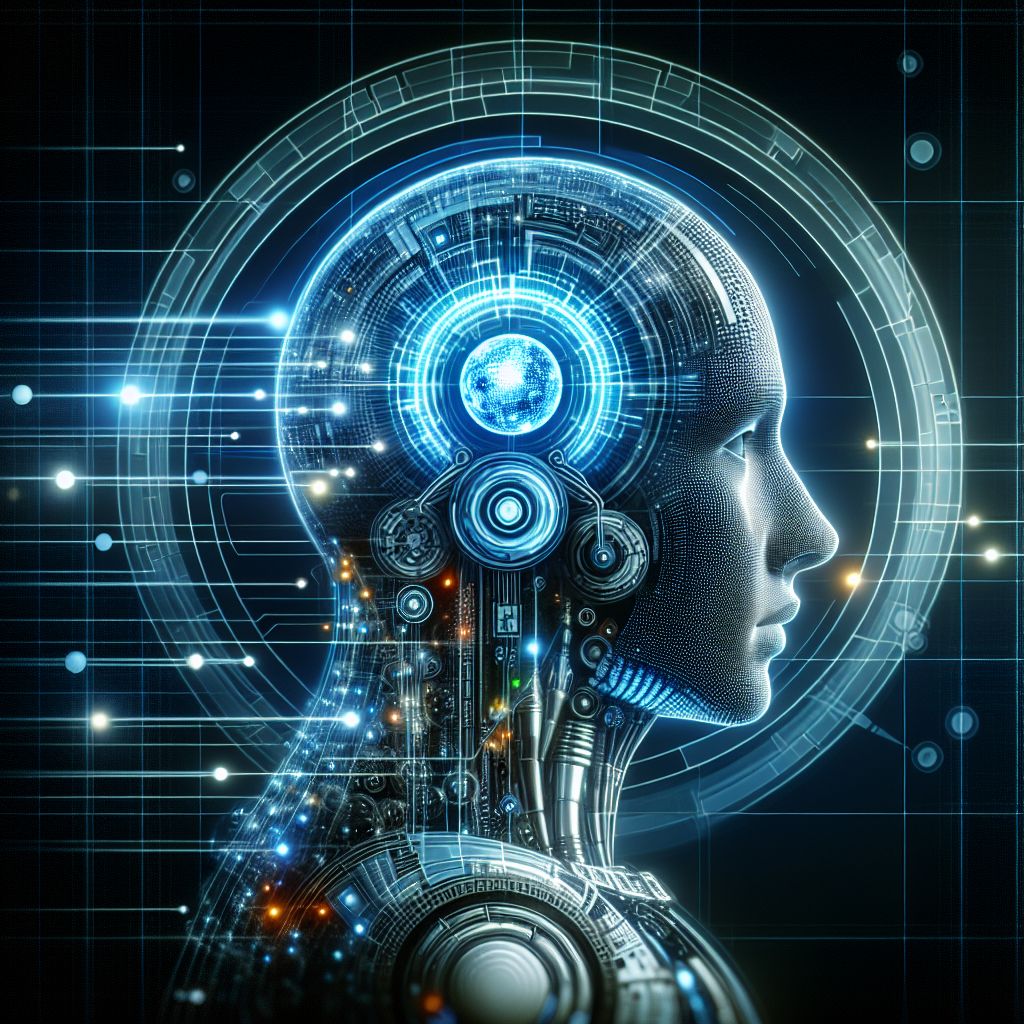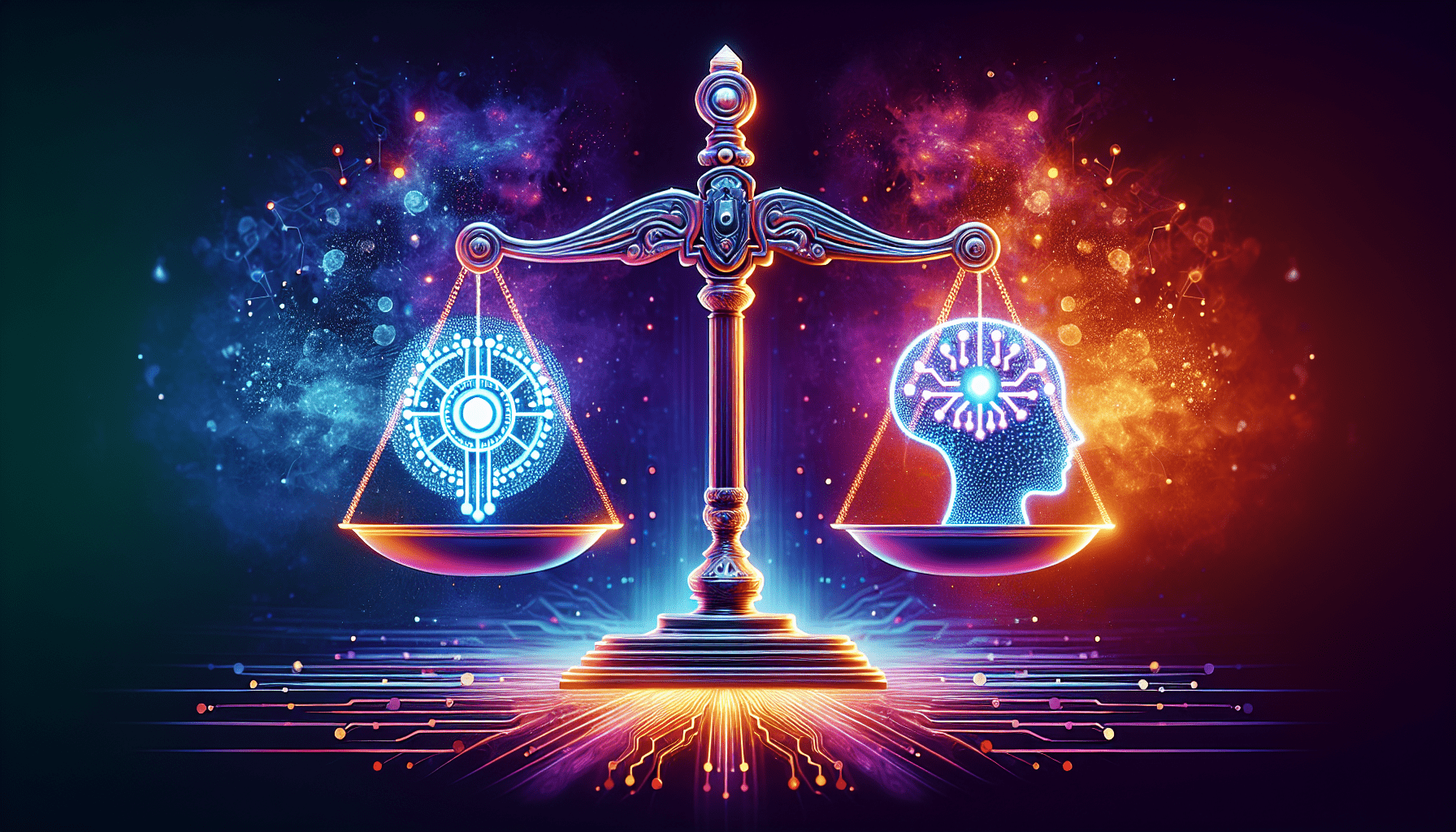Have you ever wondered how intelligent virtual assistants come up with such accurate and prompt responses? The secret lies in knowledge graphs. These powerful tools enable virtual assistants to gather, organize, and understand vast amounts of information, allowing them to provide relevant and helpful answers to your questions. In this article, we will explore the world of knowledge graphs and how they enhance the capabilities of intelligent virtual assistants. So, sit back, relax, and prepare to be amazed by the fascinating world of AI-powered knowledge graphs.
What are Knowledge Graphs?
Definition of Knowledge Graphs
Knowledge Graphs are a powerful tool used in the field of artificial intelligence to represent and organize large amounts of information in a structured and interconnected manner. A Knowledge Graph is essentially a graph-like database that captures relationships between various entities and concepts. It provides a way to navigate and explore information, allowing intelligent virtual assistants to understand and respond to user queries more effectively.
Components of Knowledge Graphs
A Knowledge Graph consists of several key components that work together to enable efficient information retrieval and understanding. The main components of a Knowledge Graph include:
-
Entities: These are the objects or concepts that are represented in the Knowledge Graph. Entities can be anything from people and places to events and abstract ideas.
-
Relationships: Relationships define the connections between entities in the Knowledge Graph. They represent the associations or interactions between different entities.
-
Attributes: Attributes provide additional details or characteristics about entities in the Knowledge Graph. They help in capturing more nuanced information and enriching the understanding of the entities.
-
Ontology: An ontology is a formal description of the types, properties, and relationships of entities and concepts in a specific domain. It acts as a structured framework that defines the hierarchy and semantics of the Knowledge Graph.
-
Metadata: Metadata includes additional information about the entities, relationships, and attributes in the Knowledge Graph. It helps in organizing and categorizing the information in a more meaningful way.
By incorporating these components, Knowledge Graphs provide a comprehensive and interlinked representation of knowledge that can be leveraged by intelligent virtual assistants to deliver more accurate and contextual responses to user queries.
Intelligent Virtual Assistants
Introduction to Intelligent Virtual Assistants
Intelligent Virtual Assistants, also known as IVAs, are software agents that can perform tasks and provide services to users through natural language interaction. IVAs leverage artificial intelligence and natural language processing techniques to understand and interpret user queries, enabling them to assist and provide relevant information or perform actions.
IVA technologies have evolved significantly over the years, with their capabilities ranging from simple task automation to more complex conversational interactions. They can be found in various forms, such as chatbots, voice assistants, and virtual customer service representatives.
Features and Capabilities of Intelligent Virtual Assistants
Intelligent Virtual Assistants possess a wide range of features and capabilities that make them valuable tools in various domains. Some of the key features and capabilities include:
-
Natural Language Processing (NLP): IVAs have the ability to understand and process natural language input, allowing users to communicate with them in a conversational manner.
-
Contextual Understanding: IVAs can maintain context and understand the context of a conversation to provide more relevant and personalized responses.
-
Task Automation: IVAs can automate tasks and assist users in completing specific actions, such as booking appointments, ordering products, or providing directions.
-
Information Retrieval: IVAs can retrieve information from various sources, including databases, websites, and knowledge graphs, to provide users with accurate and up-to-date information.
-
Multimodal Interaction: IVAs can interact with users using different modalities, such as text, voice, and visual interfaces, allowing for a more flexible and user-friendly experience.
By leveraging these features and capabilities, IVAs can enhance user interactions, streamline tasks, and provide valuable assistance in a wide range of applications and industries.
This image is property of images.unsplash.com.
The Role of Knowledge Graphs in Intelligent Virtual Assistants
Enhancing Responses
Knowledge Graphs play a crucial role in enhancing the responses generated by intelligent virtual assistants. By incorporating a vast amount of structured knowledge and relationships between entities, Knowledge Graphs enable IVAs to provide more accurate and comprehensive answers to user queries.
When a user asks a question, the IVA can utilize the Knowledge Graph to understand the context, identify relevant entities and relationships, and generate a response that incorporates the most relevant and up-to-date information. This helps in improving the accuracy and relevance of the responses and ensures that users receive valuable and meaningful information.
Improving User Experience
Intelligent Virtual Assistants utilize Knowledge Graphs to improve the overall user experience by providing personalized and contextually aware responses. By understanding the user’s preferences, interests, and previous interactions, IVAs can tailor their responses to match the user’s specific needs.
For example, if a user frequently asks about specific topics or entities, the IVA can utilize the Knowledge Graph to learn about those preferences and anticipate the user’s needs in future interactions. This personalized approach enhances the user experience and creates a more engaging and satisfying interaction with the virtual assistant.
Personalization and Contextual Awareness
Knowledge Graphs contribute to personalization and contextual awareness in IVAs by enabling them to understand the user’s intent and provide more relevant and specific responses. The relationships and connections captured in the Knowledge Graph allow the IVA to infer additional information and context that goes beyond the explicit user query.
By leveraging this contextual information, the IVA can provide more accurate and contextually relevant responses. For example, if a user asks for restaurant recommendations, the IVA can take into account the user’s location, dietary preferences, and previous interactions to provide personalized recommendations that are tailored to the user’s needs and preferences.
By incorporating Knowledge Graphs into their systems, IVAs can deliver more intelligent, personalized, and contextually aware responses, enhancing the overall user experience and providing valuable assistance.
Building and Maintaining Knowledge Graphs
Data Collection and Integration
Building a Knowledge Graph starts with data collection from various sources, such as websites, databases, and structured datasets. This data is then integrated and transformed into a unified format to create a comprehensive knowledge base.
Data integration involves merging data from different sources and resolving any conflicts or inconsistencies. This process includes entity identification, entity disambiguation, and data mapping to ensure that all relevant information is captured accurately.
Entity Extraction and Entity Linking
Entity extraction is the process of identifying entities and concepts from unstructured or semi-structured data. Natural language processing techniques, such as named entity recognition and entity classification, are used to extract entities and their attributes.
Entity linking is the process of connecting the extracted entities to the relevant entries in the Knowledge Graph. This involves resolving ambiguities and matching the extracted entities with the corresponding entities in the Knowledge Graph, ensuring that the information is correctly linked and related.
Semantic Annotation and Ontology Development
Semantic annotation involves assigning semantic meaning to the entities and relationships in the Knowledge Graph. This process includes linking entities to existing ontologies or creating new ontologies to define the types, properties, and relationships of entities.
Ontology development enables the formal representation of knowledge in a specific domain. It helps in organizing and categorizing the information in the Knowledge Graph and provides a structured framework for reasoning and inference.
By following these steps and employing various techniques and tools, organizations can build and maintain robust Knowledge Graphs that capture and organize diverse and interconnected information.
This image is property of images.unsplash.com.
Knowledge Graph Querying and Reasoning
Query Processing and Optimization
Query processing involves transforming user queries into a format that can be efficiently processed by the Knowledge Graph. This includes parsing the query, identifying the relevant entities and relationships, and formulating a query that retrieves the desired information.
Query optimization aims to improve the efficiency and speed of query processing. Techniques such as indexing, caching, and query rewriting are used to optimize query execution and reduce the response time.
Semantic Search in Knowledge Graphs
Semantic search leverages the semantic relationships captured in the Knowledge Graph to enhance the search experience. It goes beyond keyword-based search and considers the context, intent, and relationships between entities to deliver more accurate and relevant search results.
By understanding the semantic meaning of user queries and the entities in the Knowledge Graph, semantic search enables more precise and fine-grained search capabilities, improving the accuracy and relevance of search results.
Inference and Reasoning
Inference and reasoning involve deriving new knowledge or conclusions based on existing information in the Knowledge Graph. By applying logical rules and inference techniques, IVAs can infer relationships, make deductions, and provide more insightful and meaningful responses.
Inference and reasoning enable IVAs to go beyond simple lookup and retrieval of information and provide deeper insights and explanations to user queries. This enhances the overall intelligence and capabilities of the virtual assistant, making it more valuable in assisting users.
Semantic Technologies in Knowledge Graphs
RDF (Resource Description Framework)
RDF is a standard language for describing information in a structured and machine-readable way. It provides a flexible and extensible framework for representing knowledge and relationships in the form of triples, consisting of a subject, predicate, and object.
RDF is widely used in Knowledge Graphs to express the entities, relationships, and attributes captured in the graph. It enables interoperability and data integration by providing a common format for exchanging and sharing knowledge.
SPARQL (SPARQL Protocol and RDF Query Language)
SPARQL is a query language for retrieving and manipulating data stored in RDF format. It provides a powerful and expressive way to query Knowledge Graphs, allowing users to retrieve specific information, perform complex joins, and filter data based on various criteria.
SPARQL allows intelligent virtual assistants to interact with Knowledge Graphs and retrieve information that is relevant to user queries. It facilitates efficient and precise querying, enabling IVAs to deliver accurate and meaningful responses.
OWL (Web Ontology Language)
OWL is a semantic web language that enables the creation and sharing of ontologies. It provides a rich set of constructs and axioms to define classes, properties, and relationships between entities.
OWL is commonly used in Knowledge Graphs to formalize the semantics and structure of the graph. It allows for reasoning and inference, enabling IVAs to derive new knowledge and make logical deductions based on the ontological definitions.
By utilizing these semantic technologies, Knowledge Graphs become more powerful and expressive, enabling intelligent virtual assistants to access and reason over knowledge in a structured and meaningful way.
This image is property of images.unsplash.com.
Applications of Knowledge Graphs in Intelligent Virtual Assistants
Natural Language Understanding (NLU)
Knowledge Graphs enhance the natural language understanding capabilities of IVAs by providing a structured representation of knowledge. IVAs can leverage the relationships and context captured in the Knowledge Graph to understand and interpret user queries more accurately.
For example, if a user asks, “What is the capital of France?”, the IVA can utilize the Knowledge Graph to identify the entities “capital” and “France” and the relationship “has capital”. By retrieving the relevant information from the Knowledge Graph, the IVA can provide the correct answer, “The capital of France is Paris.”
Question Answering
Knowledge Graphs are instrumental in providing accurate and comprehensive responses to user questions. IVAs can utilize the structured information in the Knowledge Graph to match user queries with relevant entities and relationships, enabling them to generate accurate and meaningful answers.
For instance, if a user asks, “Who wrote the Harry Potter books?”, the IVA can use the Knowledge Graph to identify the relevant entities “Harry Potter books” and “author” and retrieve the correct answer, “The Harry Potter books were written by J.K. Rowling.”
Recommendation Systems
Knowledge Graphs play a vital role in powering recommendation systems in intelligent virtual assistants. By incorporating user preferences, historical data, and the relationships captured in the Knowledge Graph, IVAs can provide personalized recommendations for various products, services, or content.
For example, if a user asks for music recommendations, the IVA can utilize the user’s listening history, preferences, and the relationships between artists, genres, and albums in the Knowledge Graph to generate personalized recommendations that match the user’s taste.
By leveraging the power of Knowledge Graphs, IVAs can deliver intelligent, accurate, and personalized assistance in various applications and domains.
Challenges and Limitations of Knowledge Graphs
Data Quality and Completeness
One of the main challenges in building and maintaining Knowledge Graphs is ensuring the quality and completeness of the data. Data from diverse sources may contain inconsistencies, inaccuracies, or missing information, which can affect the reliability and accuracy of the Knowledge Graph.
To address this challenge, organizations need to invest in data cleansing, validation, and enrichment processes. They should also establish mechanisms to continuously update and validate the data in the Knowledge Graph to ensure its quality and completeness.
Scalability and Performance
Knowledge Graphs can grow to be very large and complex, containing billions of entities and relationships. This poses challenges in terms of scalability and performance. Querying and reasoning over large Knowledge Graphs can be time-consuming and resource-intensive.
To overcome scalability and performance issues, organizations can employ techniques such as distributed computing, parallel processing, and query optimization. They can also leverage advanced technologies, such as graph databases, to handle the scale and complexity of Knowledge Graphs more efficiently.
Privacy and Security
Knowledge Graphs can contain sensitive and confidential information, such as personal data or proprietary knowledge. Protecting the privacy and security of the data in the Knowledge Graph is crucial to maintain user trust and comply with regulatory requirements.
Organizations need to implement robust security measures, such as access controls, encryption, and anonymization techniques, to safeguard the data in the Knowledge Graph. They should also adhere to privacy regulations and establish clear policies and procedures for data handling and protection.
Addressing these challenges and ensuring data quality, scalability, and security are essential for the successful implementation and utilization of Knowledge Graphs in intelligent virtual assistants.

Future Trends in Knowledge Graphs for Intelligent Virtual Assistant Responses
Machine Learning and Knowledge Graph Integration
The integration of machine learning techniques with Knowledge Graphs is a promising future trend in the development of intelligent virtual assistants. Machine learning algorithms can be used to discover and extract patterns, relationships, and correlations from the data in the Knowledge Graph.
By combining the power of machine learning with the structured knowledge in the Knowledge Graph, IVAs can enhance their understanding, reasoning, and decision-making capabilities. This integration enables IVAs to continuously learn and improve from user interactions and adapt to changing user preferences and needs.
Augmented Reality and Knowledge Graphs
Another exciting trend is the integration of augmented reality (AR) with Knowledge Graphs. AR technology overlays virtual information and objects onto the real world, creating immersive and interactive experiences.
By integrating Knowledge Graphs with AR, IVAs can provide users with real-time contextual information and assistance based on their surroundings. For example, an IVA could identify objects or landmarks in the user’s surroundings and provide relevant information or recommendations.
The combination of AR and Knowledge Graphs opens up new possibilities for enhancing the user experience and delivering more interactive and immersive virtual assistant interactions.
Multi-lingual and Cross-domain Knowledge Graphs
The development of multi-lingual and cross-domain Knowledge Graphs is another future trend that holds great potential. Multi-lingual Knowledge Graphs can capture knowledge in multiple languages, enabling IVAs to understand and respond to user queries in different languages.
Cross-domain Knowledge Graphs, on the other hand, integrate knowledge from diverse domains, allowing IVAs to provide comprehensive and holistic assistance across different areas of knowledge.
By expanding the scope and reach of Knowledge Graphs, IVAs can become more versatile and valuable in assisting users with a wide range of needs and preferences.
Conclusion
Knowledge Graphs play a fundamental role in enhancing the capabilities of intelligent virtual assistants. They provide a structured and interconnected representation of knowledge, enabling IVAs to understand user queries, generate accurate and meaningful responses, and deliver personalized and contextually aware assistance.
From enhancing responses to improving user experience and enabling personalized and contextually aware interactions, Knowledge Graphs contribute to the overall intelligence and effectiveness of intelligent virtual assistants.
Building and maintaining robust Knowledge Graphs require careful data collection, integration, entity extraction, entity linking, and semantic annotation. Querying and reasoning use techniques such as query optimization, semantic search, and inference to retrieve and process information efficiently.
Semantic technologies, including RDF, SPARQL, and OWL, provide the foundation for representing and manipulating knowledge in Knowledge Graphs, enhancing their expressivity and reasoning capabilities.
Knowledge Graphs find applications in various areas such as natural language understanding, question answering, and recommendation systems, where they provide accurate and personalized assistance to users.
While challenges such as data quality, scalability, and security need to be addressed, the future holds exciting possibilities for Knowledge Graphs in intelligent virtual assistant responses. Integration with machine learning, augmented reality, and the development of multi-lingual and cross-domain Knowledge Graphs will further enhance the intelligence and capabilities of IVAs, delivering more valuable and engaging user experiences.








